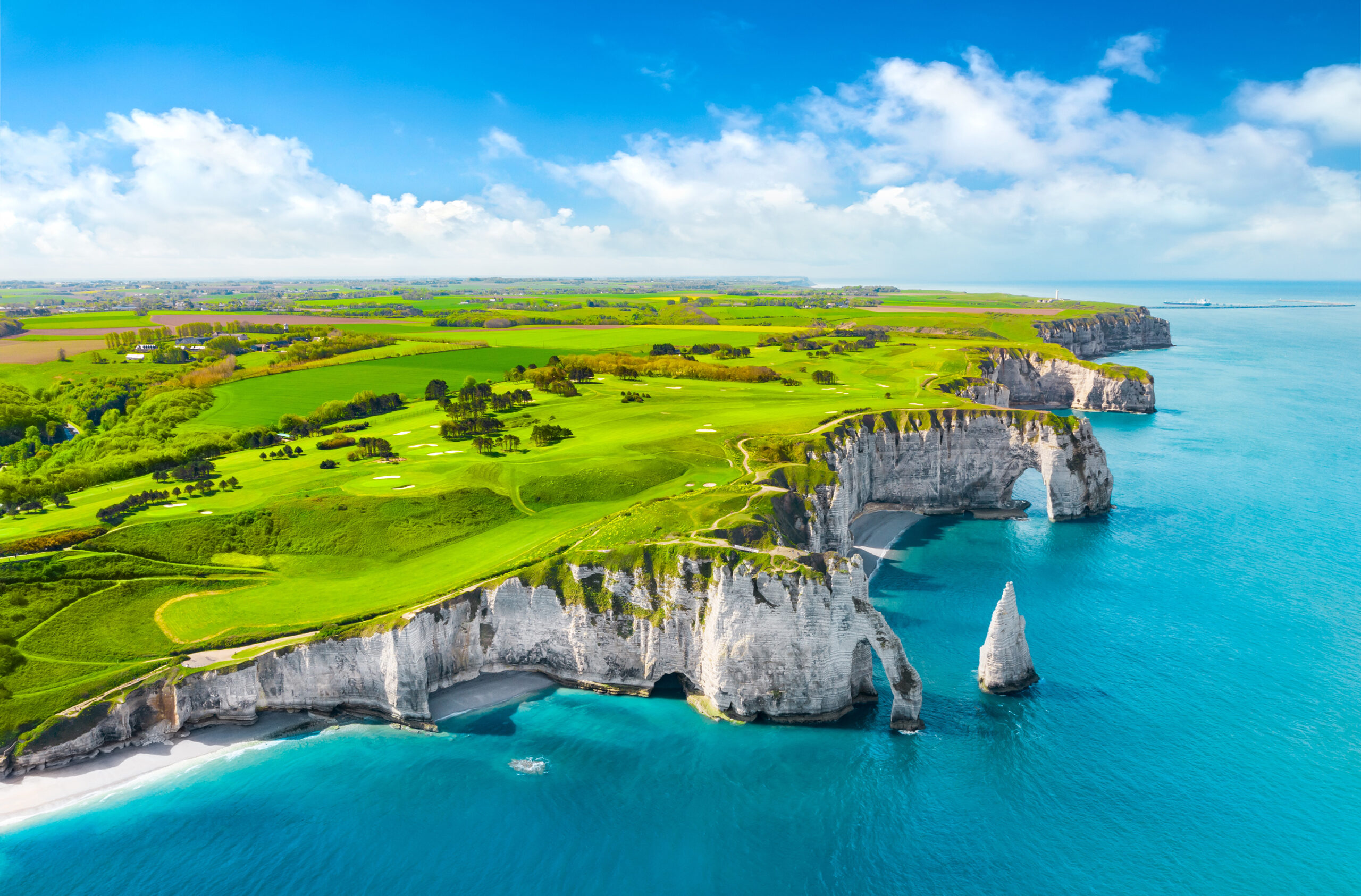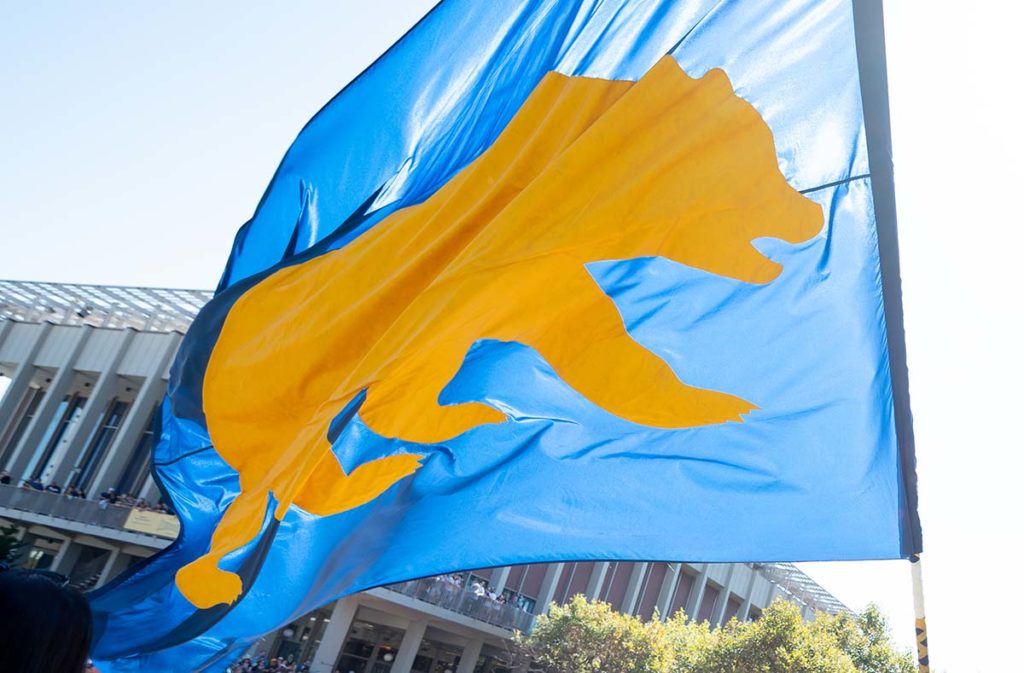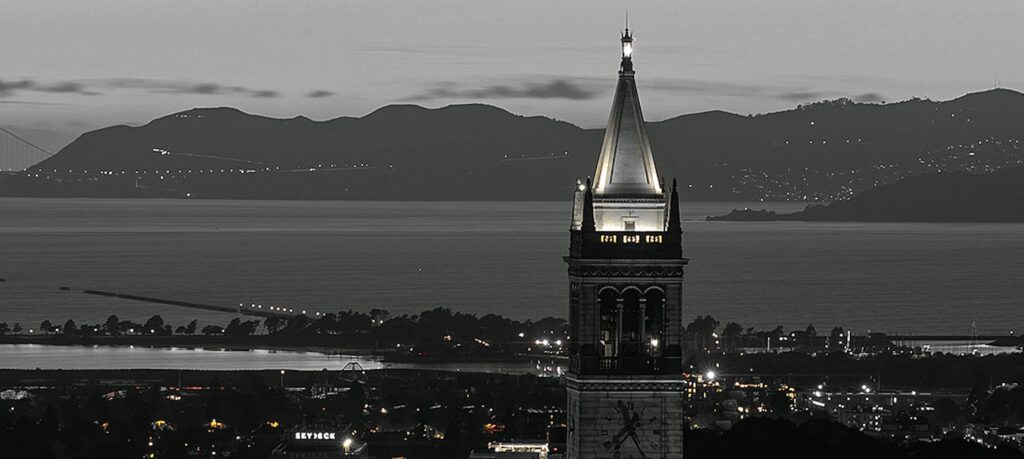Like a pickup truck parked amid a row of compact cars, the extra-long bicycle painted green, blue, and yellow calls attention to itself among the two-wheelers slotted into the bike rack in front of Wheeler Hall. This unusual campus transport belongs to Jacob Seigel-Boettner, a Peace and Conflict Studies major from Santa Barbara who will graduate next spring. He uses the sturdy platform mounted on the bike’s elongated rear frame to carry his books, his groceries, and sometimes his friends, but the three-speed actually was designed for coffee farmers in Rwanda, a world away from the Berkeley campus.
Seigel-Boettner spent two months during the spring 2008 semester in Rwanda, helping a non-governmental organization called Project Rwanda to assemble and repair coffee bikes. He was doing fieldwork for his minor in Global Poverty and Practice, which is under the aegis of the Blum Center for Developing Economies.
An avid cyclist and member of the Cal team, Seigel-Boettner first came across the Rwanda program in a bike magazine. "I’ve been biking ever since I could walk," he said. "I always wanted to get involved in some sort of development, but when I saw this was a bike-related project, it seemed perfect.
Famed American cycle-designer Tom Ritchey came up with the coffee bike—a bicycle-and-a-half long—while on a bike tour of Rwanda. He set up Project Rwanda (Learn more) to produce and distribute the bikes. The components are manufactured in China and shipped unassembled to Rwanda, then sold for about $200 each to individual farmers through a micro-loan program.
Part of Seigel-Boettner’s job was training Rwandans to assemble and repair the specialty bikes, and to teach the new owners how to use the unfamiliar gears. We’re all bike geeks who don’t really know anything about working in a third-world country, Seigel-Boettner said of himself and the other Project Rwanda volunteers. "We definitely learned some hard lessons." Rwanda has a half-million coffee farmers, whose crop accounts for about 40 percent of the country’s export income. "They export can carve out a market share," Seigel-Boettner said. The more quickly the beans can be brought to the coffee co-op, the higher the price farmers can get. A bike can hold a startling 220 kilos (485 pounds) of high-quality beans. A bike that carries more cargo and goes faster, thanks to the introduction of gears, is a major investment in future income.
Distances and terrain vary widely, but Project Rwanda estimates that using a coffee bike can cut the time for each trip by three hours on average. In the off-season, owners sometimes rent their bikes to taxi drivers or become taxi drivers themselves, since the bike’s platform is big enough to hold up to three passengers.
Global Poverty students are required to do fieldwork, which they organize themselves. Though they don’t get academic credit for time in the field, when they return to campus they produce a report on their project, for which they do get credit. Seigel-Boettner got permission to make a documentary film instead of a written report, which was shown at the Santa Barbara Film Festival in January. The film centers on a coffee farmer named Mudahinyuka Pascal. "I sort of followed him through the process of obtaining the bike, so I went and interviewed him beforehand, saw … a day in the life—of picking coffee, transporting it, the problems with that—and then got him the bike."
Seigel-Boettner went back to Rwanda in the summer after his fieldwork and interviewed Pascal again. “It was actually pretty amazing—like, he’s become the village ambulance. Whenever somebody gets sick, he takes the whole family to the hospital."
Seigel-Boettner is still raising money for Project Rwanda, and some of his teammates also volunteered to go there. "Project Rwanda and Cal Cycling have sort of definitely merged,” he said. And he can be seen riding his weird bike around the Berkeley hills. "I feel like that gives me more of an appreciation of what the Rwandans have to do," he said. "I love the number of double-takes that I get riding around campus. It’s very bright—it’s green, yellow, and blue, the colors of the Rwandan flag. It’s kind of hard to miss."




















